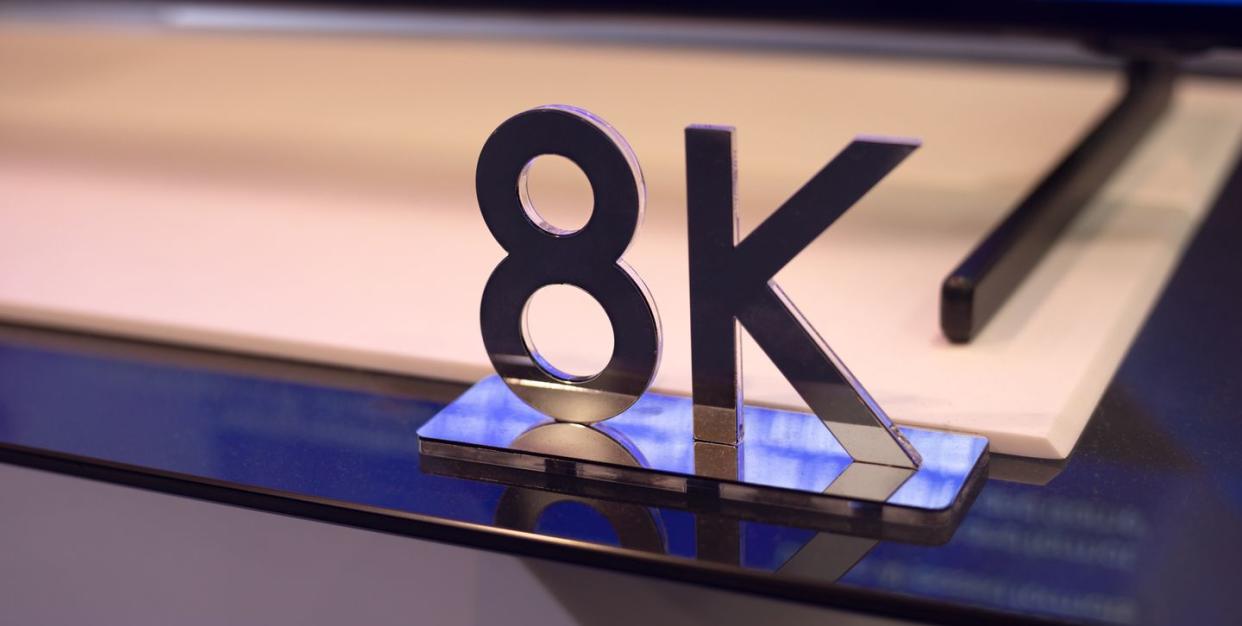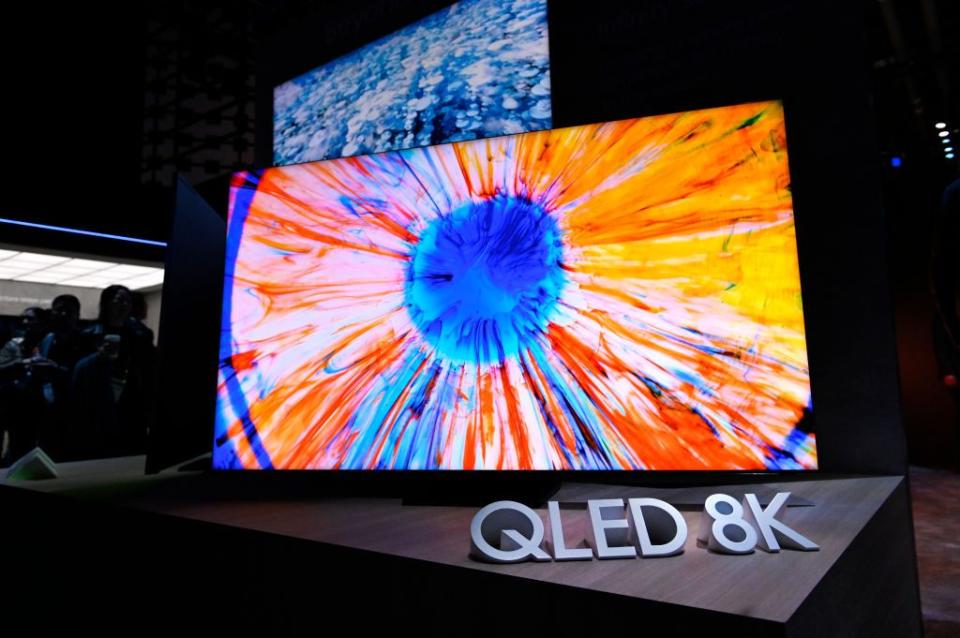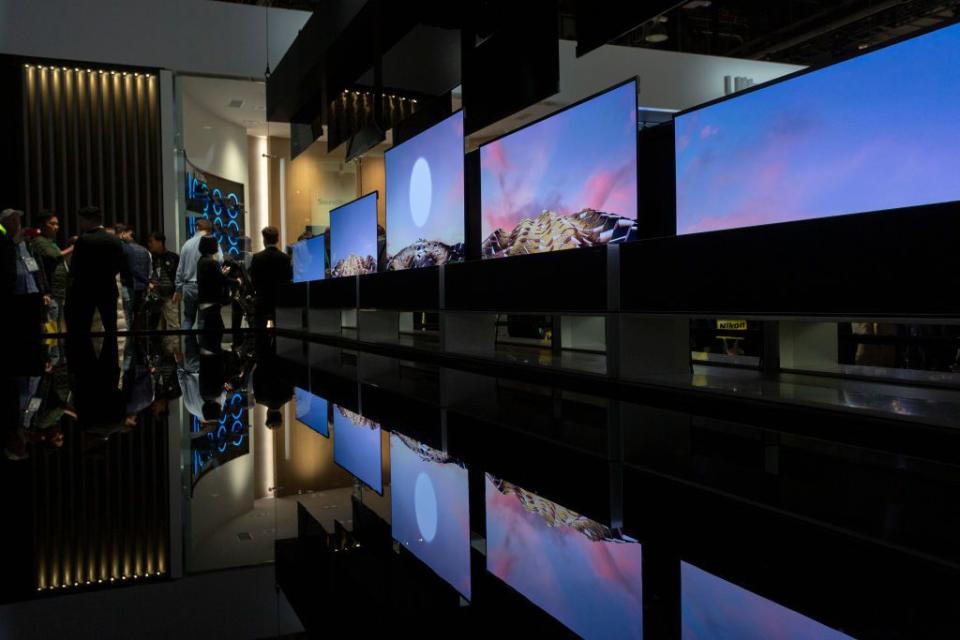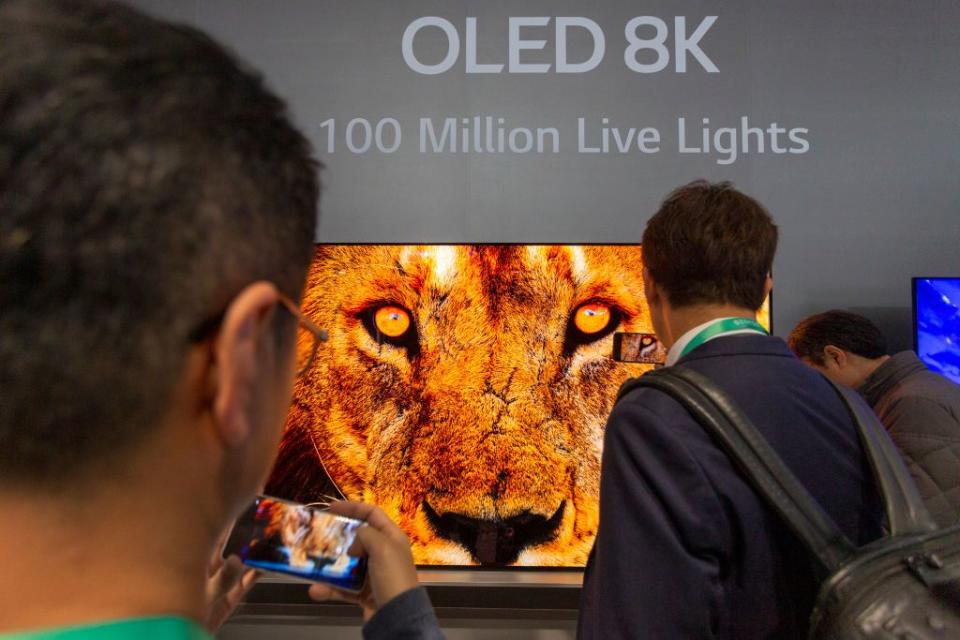8K TVs Are Totally Pointless. Here's Why You Should Stick With 4K

For the longest time 2020 felt like a distant, far-off year that we would just never reach, but we have finally arrived and 'future tech' is quickly becoming 'modern tech'. CES 2020 has given us a taste of what to expect from the next decade of gadgets and it appears the 8K TV floodgates have opened.
Yeah, that's right. Just when you thought you were catching up to the tech trailblazers by upgrading to 4K, the world has already moved on to shiny, new 8K TVs. Typical.
But is that really the case? Las Vegas has become the showground for what we will be buying and Netflix bingeing on, but is it really time to chuck that new 4K tellybox out of the window and invest in something even better?
The world's biggest tech giants, from Sony and Samsung, to LG and Toshiba, are dropping millions into developing extreme resolution displays and fast-motion screens that will place you directly in the action. But the rest of us are still trying to work out what 4K actually means.
So should you be buying into 8K? Well, we think you should hold onto your pennies for now. We might be living in a post-Blade Runner-era 2020, but 8K entertainment is a trend you just don't need to follow. Here's why:
8K TV Explainer – What is 8K?
Stick with us here, as we're about to throw a bunch of letter spaghetti and tech jargon at you, but it will all make sense in the end.

8K refers to the amount of pixels a display can show you, with the more pixels making the image quality higher and sharper. If there are less pixels in a particular image, it means that individual pixels are required to do more work and display more data, meaning the image will look blurry and washed out. A greater number of pixels per inch means there are more pixels to share the load and make content look much crisper and smoother.
You might notice on YouTube you can improve the quality from 360p (a blurry, pixelated, vomit-inducing mess) into HD and above, meaning the video will display in at least 1080p (1,080 horizontal pixels by 1,920 vertical pixels), which used to be the old standard for TVs in the early 2010s.
Since then, the world has moved on to 4K, which is the new standard of TVs. This bumps up your pixel count to 3,840 x 2,160 pixels, essentially quadrupling the resolution of your TV and improving the quality by a huge step.
4K is a massive stride forward if you're coming from standard HD quality, and you'll definitely notice the difference – images will stand out more, colours will pop, and landscapes will shine in amazing detail.
What CES 2020 is showing us is that 8K is the next grand step forward in entertainment, doubling the resolution again to 7,680 × 4,320 – or a massive 16x better than HD.

Obviously there are many more factors at play when thinking about picture quality on your TV (think HDR, screen refresh rate, DVD vs Blu-ray) but just looking at the pixel aspect, 8K is, at least on paper, better than 4K in every way. Or is it?
So now I have to buy an 8K TV? I just bought a 4K TV!
Well, you can if you want to, but only if you've got a spare £8k to throw at a TV.
8K is still in the extreme early-adopter phase of release, with only a couple of people actually buying them from shops right now, particularly in the UK. In fact, only 900,000 8K TVs were sold in 2019, and half of those went to Chinese consumers, so you really don't need to rush out and take out a second mortgage to get one right now.
Samsung is making the first real attempt to bring 8K TVs into regular people's living rooms and, even then, it's going to take a fair chunk out of your bank account. That's actually half the problem with 8K TVs right now, as most of us mere mortals will be priced out of the technology almost immediately.
Meanwhile, 4K TVs are way more affordable than they used to be. You can pick up a pretty solid 40" TV for under £400 right now, and most top quality ones are around £1k.
You're much more likely to be able to buy one of these and actually enjoy it without that looming sense that you've bankrupted yourself just to binge-watch The Office for the 17th time in a row.
So what can I watch in 8K?
Here is the real problem with all this future tech talk: there isn't actually any 8K content for you to watch. No, seriously, the amount of content filmed and specifically made to be played in 8K is pretty much limited to short nature programmes and sweeping shots of mountains – you know the ones. The rest is upscaled 4K and not true, native 8K.
If you get the chance to look at an 8K TV in action, you'll most likely be watching 4K content on a stretched out screen. Your eyes might not be able to notice if it's upscaled or not, but the TV can't create detail from nothing, and the drop in quality is definitely there.

It has taken the TV and film industry years to adjust to 4K content and develop shows and movies that are both filmed and upgraded in the Ultra HD format, and it's still only just becoming the standard.
It was only in the last year or two that Netflix started to invest in Ultra HD for every one of their Netflix-Original shows and movies (House of Cards was the first really big Ultra HD release for Netflix back in 2013, and it's only got more common as we progress).
However, there are only a few cameras available in the world that can film in 8K and movie studios are forced to pay millions of dollars to rent them for just a day's use. Clearly, they aren't going to be shooting the next season of The Witcher in 8K, what with James Cameron hogging all the top-end cameras for Avatar 2.
Your broadband is going to break
The other aspect of this is that streaming services and, most importantly, your internet, won't be able to handle all that data.

You need a pretty good broadband connection with unlimited data to happily stream Netflix shows in Ultra HD without it buffering all the time – and that privileged internet doesn't come cheap. 8K content is literally double the data, and most households simply don't have the download speed to stream the sheer volume of pixels flying down the cables.
To give you an example of how hard it will be to stream 8K content live, the BBC tried to broadcast a 4K stream of some of the 2018 Football World Cup in Russia to a select group of people. You had to have a 4K TV (which at the time was still pretty rare), a minimum internet speed of 35Mbps (the UK average download speed is 18Mbps), and be vetted by the BBC themselves before the broadcast.
Around 3,000 people across the UK took part, and only 700 people managed to watch an entire match in 4K quality without the connection falling off or the quality dropping. And this is with only half the pixels of an 8K broadcast.
8K TVs might technically be possible, but it's the rest of the industry, from the cameras and cables used to film the content, to the internet providers and even your own brain, that needs to catch up.
The naked eye doesn't stand a chance
Regardless of all this talk of internet speeds and availability of content, the comically wasteful part of 8K tech is that our weedy, human eyes can't even process that level of detail.
If you put a 4K TV and an 8K TV of the same size next to each other, you *might* notice slight differences in the refresh rate (how fast images refresh on the screen, making the image look smoother) and the colours might look a little more punchy, but ultimately, you wouldn't be able to tell them apart.
There is only so much information your brain can take in one go, and the millions of pixels are just lost because there are too many for your eyes to handle.
Just bought a new 4K TV? Don't even sweat it
Basically, what we're trying to tell you is that 4K is still the TV resolution you should be picking up right now, despite all the hype that CES 2020 is generating.
A £400, 40" 4K TV is still a massive upgrade on an HD box and will still bring your TV shows to life. And if you have some spare cash to invest in a more expensive TV, your money can go a long way, with some of the higher-end 4K TVs delivering some staggering quality.
If you're still thinking about making the jump to 4K, check out our editor's picks of the best 4K TVS available:
Best 4K TVs under £500
LG is a pretty great option for your first 4K TV, and this model has a tonne of features to improve your experience. It has Image Mastering, improved sound quality, and Amazon Alexa built in, so you can search for TV shows and movies without using the controller for those of you feeling extra lazy.
Best 4K TVs under £800
Philips has developed an impressive 4K TV here that improves your picture quality with HDR10+. HDR (high-dynamic range) expands the amount of colour your TV can produce, making TV shows and movies pop with vibrance and life.
Most 4K TVs will have some variation on this bit of tech but for this price, you can't go wrong with the Philips option.
Best 4K TVs over £1,250
Samsung are easily among some of the best TV developers in the world, and their top-end TVs are immensely impressive, particularly their QLED models.
This 82" version is an absolute beast of a TV, with HDR 1,000 making colours pop, and a massive viewing angle, so you can turn your living room into your own personal cinema.
Like this article? Sign up to our newsletter to get more delivered straight to your inbox
You Might Also Like

 Yahoo News
Yahoo News 
